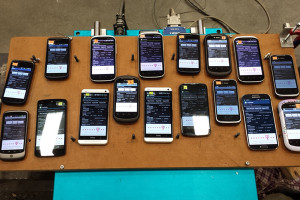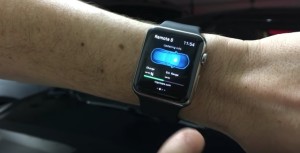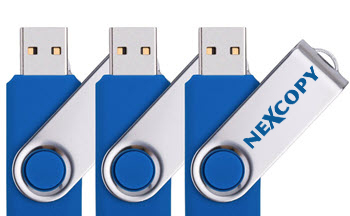As a part of the tech in Techstory, we bring you the latest in the technology from around the world under “TECH THIS WEEK!” every Sunday! This week some really cool breakthrough in the technology, right from James Bond’s Tomorrow Never Dies come alive in the Apple’s watch to apps that could make your smart phone into a seismic detector. In case, if you’ve missed any of those, don’t worry just keep reading!
Apple Watch app “summons” a Tesla
Tesla still doesn’t offer its own Apple Watch app, but the third-party Remote S just keeps getting better. A recent update to the unofficial Tesla app makes it possible to quickly summon your car from the garage with a quick tap on your wrist.
With version 3.0 of the app, you’re able to summon your electric vehicle, though you still need to specify whether the car should reverse or move forward. You can also stop the entire process with another simple tap. As you’ll notice in the video above, the summon feature will even open and close the garage door automatically thanks to HomeLink
Speaking of which, the new update also makes it possible to use HomeLink if you aren’t near the car, it’s plugged in or it isn’t in park. So you can tell your Tesla to pull out of the garage even when you aren’t home.
You can grab Remote S for $9.99 from the App Store now, though of course you’ll need a Tesla to actually do anything with it.
Source: technobuffalo.com
Gmail Is Going To Be More Secure Than Ever
Google added two new security indicators to its email service Gmail which reveal TLS encryption support and whether the sender could be authenticated.
Many popular email services, including Gmail, support TLS (Transport Layer Security) encryption to protect data while it is in transit.
TLS is only useful if both the sending and receiving email service supports it, and one of the new features highlights on Gmail when TSL encryption is not supported by another service.
Gmail highlights the fact with a red open padlock image in the email header. You can click on the lock icon to display additional information, but it means effectively that the third-party mail server did not encrypt the message (likely because it is not configured to use TLS). The red open padlock icon is displayed for receiving emails but may also be displayed when you are composing emails.
The second new security feature on the Gmail website is subtle. If the sender of an email address cannot be authenticated, you will see a red question mark instead of a profile photo, avatar or the default blank profile icon. You can look up authentication information with a click on the down arrow icon next underneath the name of the sender of the email. This displays mailed-by and signed-by information in an overlay, and you will notice that those two won’t match usually if the sender could not be authenticated.
Source: ghacks.net
Image Credits: thetechzealot.com
U.S. Government May Use The Internet Of Things To Spy On Its People
The nation’s top intelligence officer admitted Tuesday that the government may use information transmitted to the Internet from your washing machine, your thermostat, your television, your refrigerator or your favorite video game against you.
Almost every home appliance and electronic gadget sold today is outfitted with a computer chip, constantly feeding information about their owners back to utilities, manufacturers and other data networks.
James Clapper, director of national intelligence, in his annual assessment of threats given before the Senate Foreign Relations Committee Tuesday, said the government considers this information fair game against people it suspects of terrorism or other crimes.
The so-called “Internet of things” is providing a bevy of personal information about Americans, many of whom are completely unaware of the dragnet they are tied into.
Smart meters, for instance, measure, in real time, a homeowner’s electricity usage, what appliance or device the usage is coming from, and feed that information to the local utility provider. Many televisions are capable of picking up sound and motion through microphones and motion sensors. Laptop computers have built-in cameras – perfect for spying
News Source: wnd.com
Image Credits: nowtheendbegins.com
The Cellphone Revolution In Africa
 The cellphone is to sub-Saharan Africa what the steam train was to 19th-century Europe: the mechanical workhorse driving social and economic transformation. Seizing the opportunity provided by the first near universally available infrastructure, hundreds of technology start-ups have sprung up across the region to plough new trade routes and seek breakthrough innovations.
The cellphone is to sub-Saharan Africa what the steam train was to 19th-century Europe: the mechanical workhorse driving social and economic transformation. Seizing the opportunity provided by the first near universally available infrastructure, hundreds of technology start-ups have sprung up across the region to plough new trade routes and seek breakthrough innovations.
There is mounting competition between global technology companies — IBM, Google, Facebook, China’s Tencent — for a slice of what are some of the world’s fastest-growing information technology (IT) markets.
The first big leap came with the adoption of cellphones. The next wave of technological advances is occurring as high-speed internet and smartphone handsets become more accessible. By 2025, half of sub-Saharan Africa’s billion-strong population will have internet access, 360-million via smartphones, according to McKinsey. Two years, ago its research identified this growing connectivity as providing huge opportunities for IT businesses in healthcare, education, finance, agriculture, retail and servicing governments.
Already there is an app for almost everything: herding cattle in Kenya (i-Cow), private security in Ghana (Hei Julor!), remotely monitoring patients in Zimbabwe (Econet) and in Uganda, an Uber-like service (Yoza) connecting dirty laundry to mobile washerwomen. Married to this explosion of innovation are the region’s demographics — more than 70% of the rapidly urbanising population is under 30. Africa’s youth are hooking up to networks far beyond their immediate communities, creating new outlets for music, TV, fashion and social comment.
Source: bdlive.co.za
Your Phone Can Become An Earthquake Detector
 Your smartphone can already warn you about earthquakes. UC Berkeley, however, is going one step further: it wants your phone to help detect those quakes. The school has released an Android app, MyShake, that uses your phone’s motion sensors to detect the telltale signs of tremors and combine that with the data from every other user. For all intents and purposes, you become part of a crowdsourced seismic station network — you can confirm a quake just by leaving your phone turned on. That could be a big help when there aren’t enough fixed stations to trigger an alert through conventional apps.
Your smartphone can already warn you about earthquakes. UC Berkeley, however, is going one step further: it wants your phone to help detect those quakes. The school has released an Android app, MyShake, that uses your phone’s motion sensors to detect the telltale signs of tremors and combine that with the data from every other user. For all intents and purposes, you become part of a crowdsourced seismic station network — you can confirm a quake just by leaving your phone turned on. That could be a big help when there aren’t enough fixed stations to trigger an alert through conventional apps.
MyShake might even give you a heads-up in the future. Once the software is known to be trustworthy, it could send early warnings to nearby areas and even provide a countdown to help you find a safe area in time. And yes, there are plans for an iOS app as well. The system is only as effective as the number of people using it (a handful of testers won’t accomplish much), but it could prove to be a life-saving tool if it really catches on.
Source: engadget.com
For regular updates on Tech, check out Techstory’s Technology Space!















